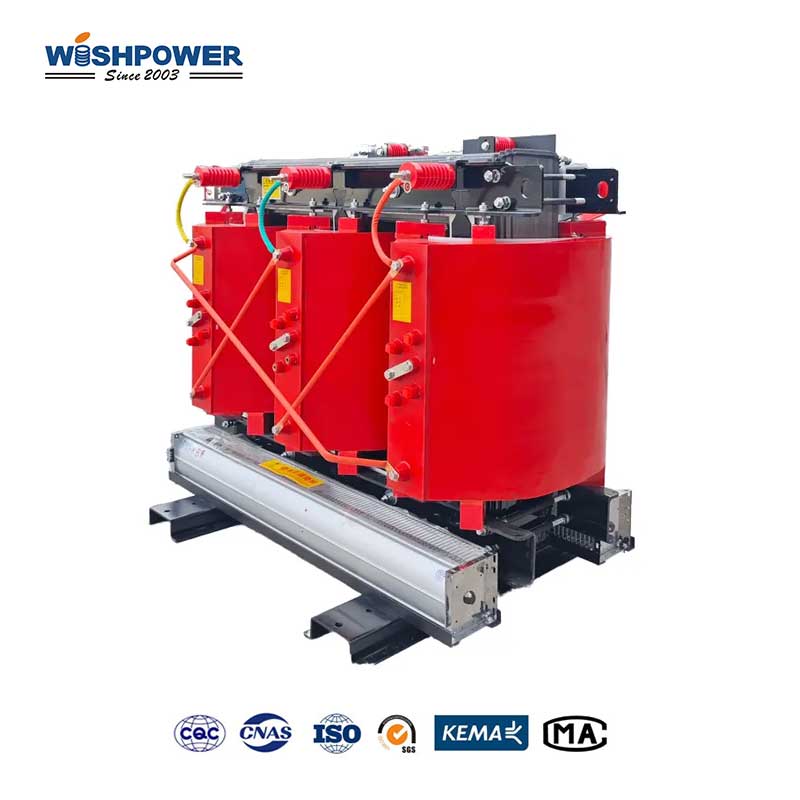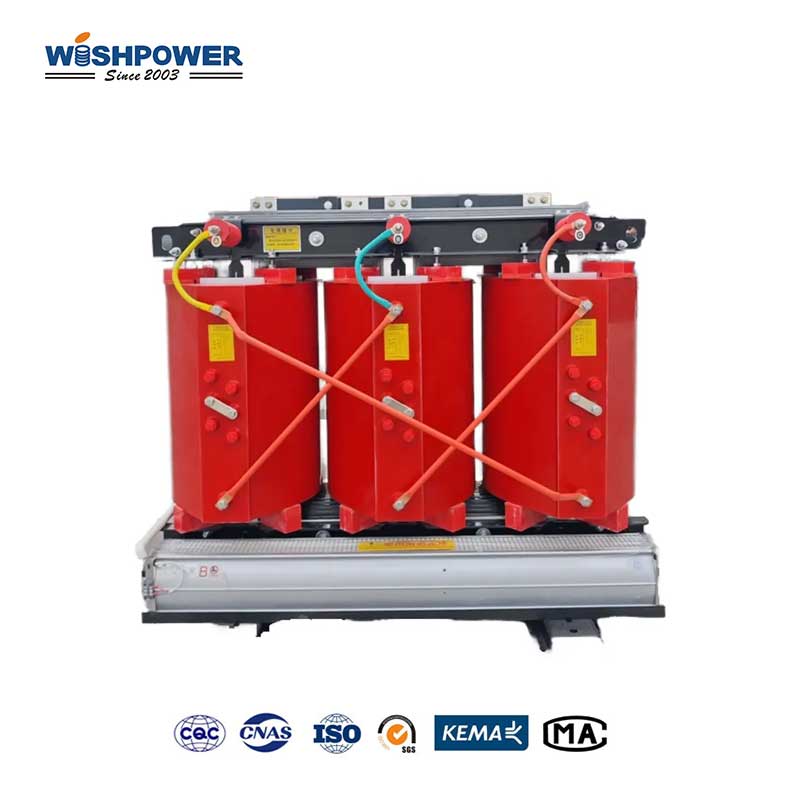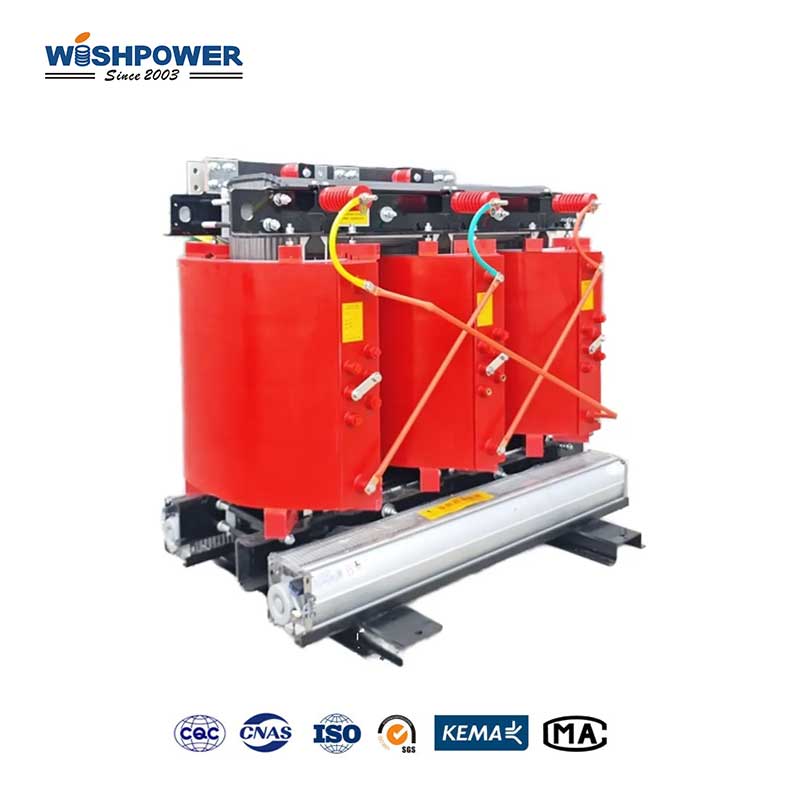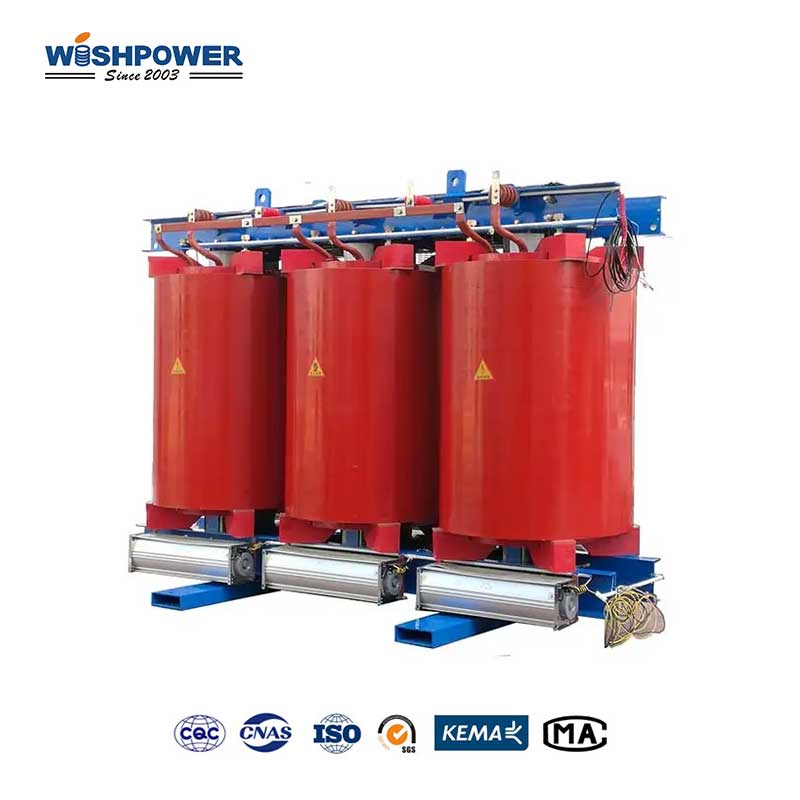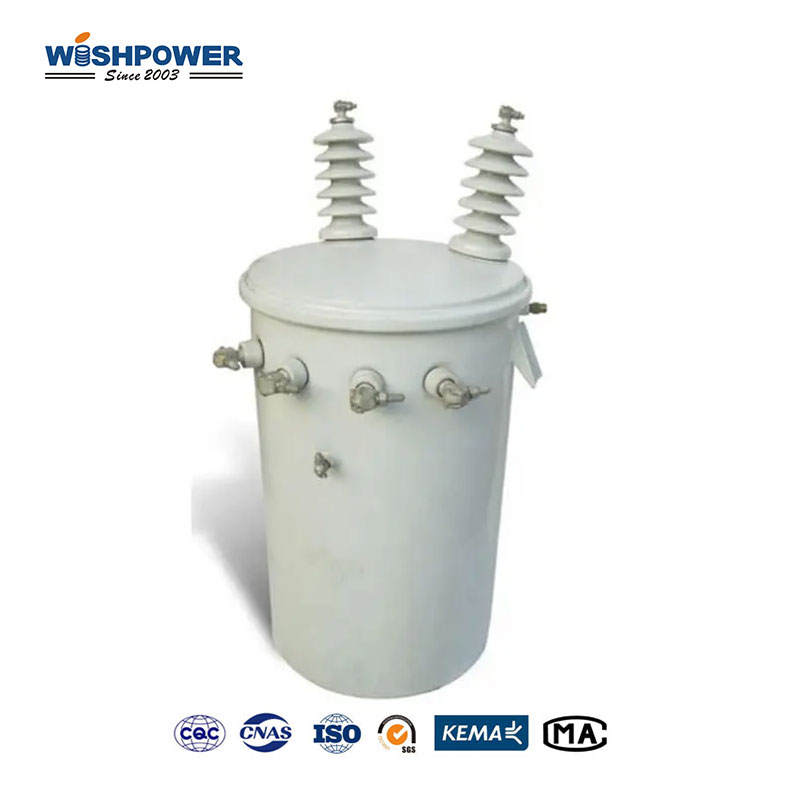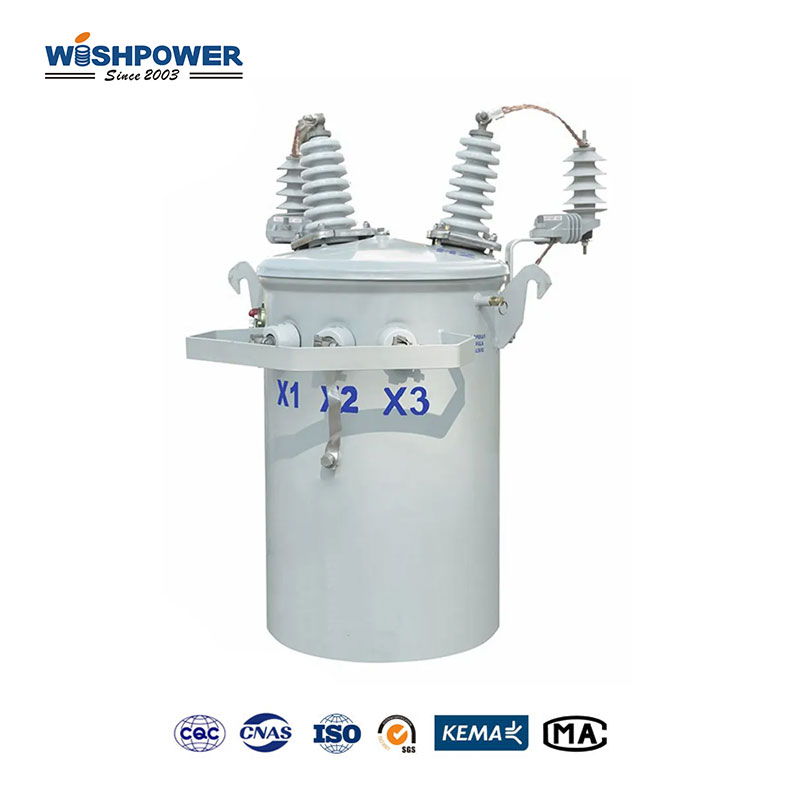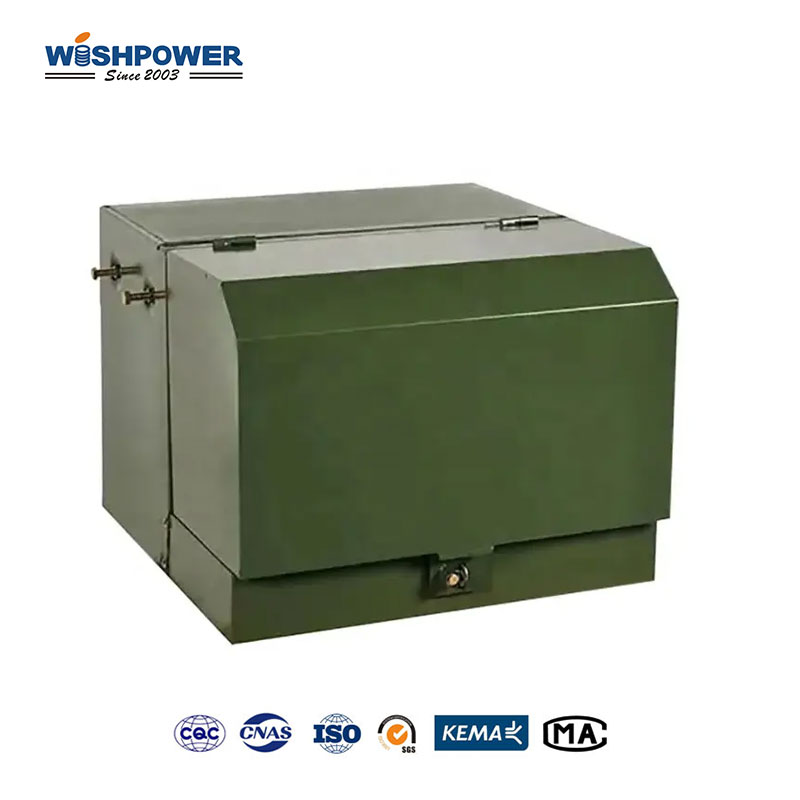Specification
| Rated capacity (kVA) |
Voltage Combination (kV) |
Connection Symbol |
Level 1 Energy Efficiency Loss Type 13 (W) |
Level 2 Energy Efficiency Loss Type 13 (W) |
Level 3 Energy Efficiency Loss Type 13 (W) |
Loss Type 11 (W) |
No-Load Current (%) |
Impedance (%) |
Gauge (mm) |
| HV |
LV |
No Load |
On Load |
No Load |
On Load |
No Load |
On Load |
No Load |
On Load |
| 30 |
6 6.3 6.6 10 11±5% or ±2*2.5% |
0.4 |
Dyn11 or Yyn0 |
105 |
640 |
130 |
640 |
150 |
710 |
205 |
780 |
2 |
4 |
400×300 |
| 50 |
155 |
900 |
185 |
900 |
215 |
1000 |
285 |
1120 |
1.8 |
400×350 |
| 80 |
210 |
1240 |
250 |
1240 |
295 |
1380 |
380 |
1550 |
1.6 |
400×315 |
| 100 |
230 |
1415 |
270 |
1415 |
320 |
1570 |
410 |
1800 |
1.6 |
550×820 |
| 125 |
270 |
1665 |
320 |
1665 |
375 |
1850 |
470 |
2100 |
4.2 |
550×820 |
| 160 |
310 |
1915 |
365 |
1915 |
430 |
2130 |
550 |
2450 |
4.2 |
550×820 |
| 200 |
360 |
2275 |
420 |
2275 |
495 |
2530 |
650 |
2850 |
4 |
550×820 |
| 250 |
415 |
2485 |
490 |
2485 |
575 |
2760 |
740 |
3250 |
4 |
660×820 |
| 315 |
510 |
3125 |
600 |
3125 |
705 |
3470 |
880 |
3900 |
1 |
660×820 |
| 400 |
570 |
3590 |
665 |
3590 |
785 |
3990 |
1000 |
4600 |
0.9 |
660×820 |
| 500 |
670 |
4390 |
790 |
4390 |
930 |
4880 |
1180 |
5470 |
0.9 |
660×820 |
| 630 |
775 |
5290 |
910 |
5290 |
1070 |
5880 |
1350 |
6500 |
0.8 |
660×820 |
| 630 |
750 |
5365 |
885 |
5365 |
1040 |
5960 |
1300 |
6700 |
0.8 |
6 |
660×820 |
| 800 |
875 |
6265 |
1035 |
6265 |
1215 |
6960 |
1540 |
7800 |
0.8 |
820×820 |
| 1000 |
1020 |
7315 |
1205 |
7315 |
1415 |
8130 |
1750 |
9250 |
0.8 |
820×820 |
| 1250 |
1205 |
8720 |
1420 |
8720 |
1670 |
9690 |
2030 |
11000 |
0.7 |
820×1020 |
| 1600 |
1415 |
10555 |
1665 |
10555 |
1960 |
11730 |
2700 |
13500 |
0.6 |
820×1020 |
| 2000 |
1760 |
13005 |
2075 |
13005 |
2440 |
14450 |
3000 |
16200 |
0.5 |
1070×1070 |
| 2500 |
2080 |
15445 |
2450 |
15445 |
2880 |
17170 |
3500 |
19500 |
0.5 |
1070×1070 |
The table above is just one of our product parameters. If you want more information, please get in touch with info@wishpower.net
What is the Dry Type Distribution Transformer?
The Dry Type Distribution Transformer steps down high-voltage electrical power through distribution primarily for urban industrial and residential systems. Dry-type transformers function without oil as they depend on air or solid insulation materials such as resin and cast coil systems to accomplish insulation needs. Their design provides greater safety with fewer environmental concerns because they eliminate the need for oil as insulation material which avoids typical oil-based transformer risks of leaks and fires. A dry-type transformer consists of steel laminates that form its core alongside insulated copper and aluminum conductors which are wound around the core. The insulation materials use epoxy or silicone. The transformer’s lack of oil leads to both reduced size and weight so installation and service needs become simpler. People choose dry-type transformers because they offer better safety against fires and require less maintenance spending. These transformers survive weather challenges and operate at extreme heat and humidity without encountering problems such as water damage or equipment failure that affects oil-based transformer systems.
Market Trends
The dry-type distribution transformer market expands at a steady pace because of environmental requirements as well as regulatory standards and technological advancements. The world faces growing demands for dependable electrical distribution networks with energy efficiency and safety performance because urban development along with industrial activities expand at an institutional level. The domestic and commercial markets increasingly adopt dry-type transformers because of their fundamental technological advantages.
The market experiences a defining shift toward environmental sustainability as one major market trend. The growing environmental pressure on oil-based transformers has led to a market transition toward dry-type transformers since they present lower environmental health hazards. The transformer’s absence of oil creates a critical advantage because it prevents any potential leakage or environmental contamination. Such features become vital in protecting sites where environmental priorities matter. The electrical industry establishes eco-friendly alternatives in electrical infrastructure because regional environmental regulations have grown stricter.
The rapid urbanization and industrialization in China and India along with other Asia-Pacific countries drive market growth in this region at the highest rate. The area is putting substantial financial resources into updating its electrical infrastructure which results in substantial demand for dry-type distribution transformers. The demand for dry-type distribution transformers has risen in Europe alongside North America because both regions need sustainable transformers under new safety standards.
Dry-type Transformer Efficiency
The performance level of dry-type transformers varies based on design characteristics and operational conditions alongside materials quality standards. Dry-type transformer efficiency levels equally match those of oil-filled transformers when they operate between 95% and 98%. The exact operational efficiency of a transformer depends on its model and how it is applied to specific systems.
Transformer efficiency depends on various factors that determine the optimization level of these devices.
- Core Losses:
Core losses occur because of the energy consumption from core material magnetization. The use of premium core materials featuring a low hysteresis effect together with minimal eddy current losses enables silicon steel to enhance efficiency.
- Copper Losses:
Electrical power escapes from windings because of their natural resistance against the flow of electricity. Superior winding design implementation with high-conductivity materials such as copper or aluminum helps reduce transformer copper losses to improve its operational efficiency.
- Load Factor:
Transformer operating efficiency depends on how much it stays near its rated operating capacity. Dry-type transformers maintain their maximum operational efficiency when they operate at their rated capacity limit or higher. The efficiency level decreases when transformers manage lighter loads since the energy dissipation becomes excessive compared to the reduced power requirements.
- Cooling System:
A cooling method using air or solid material insulation affects both the heat generation and efficiency of dry-type transformers. High-efficiency dry-type transformers include improved heat dissipation systems that both prevent overheating and keep operating performance stable.
- Loss Reduction Technologies:
The implementation of advanced materials for insulation systems and magnetic core elements leads to decreased dry-type transformer power losses thus boosting their overall energy efficiency.
Dry-type transformers maintain sufficient efficiency levels established by industry standards despite their marginally higher losses relative to those of oil-filled transformers because of their different insulation components and cooling systems. The superior safety features together with the environmental advantages of dry-type transformers contribute more value than their minimal efficiency deficit against oil-based transformers.
Certificate
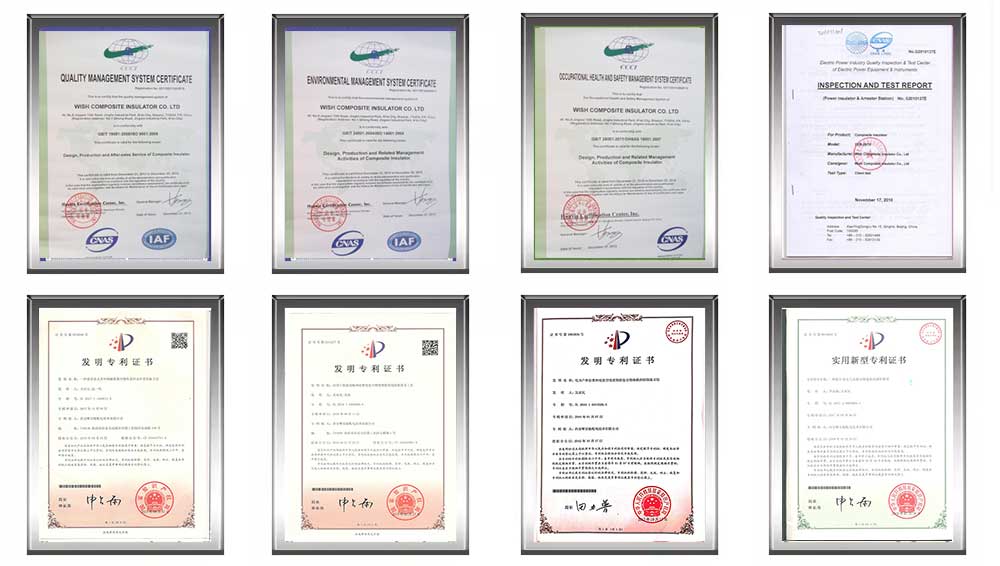
Factory
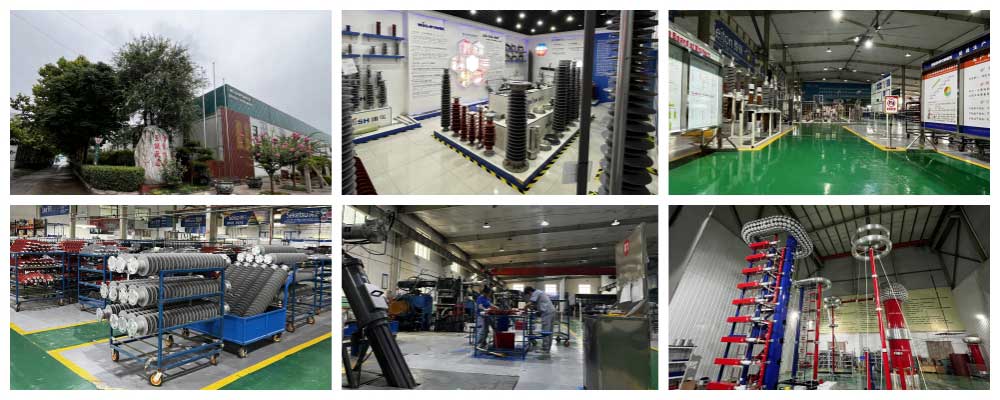
Hot Tags: Dry Type Distribution Transformer, Transformer, made in Thailand available, manufacturers, ISO factory, wholesale, KEMA, high quantity, best, price, low to high voltage






